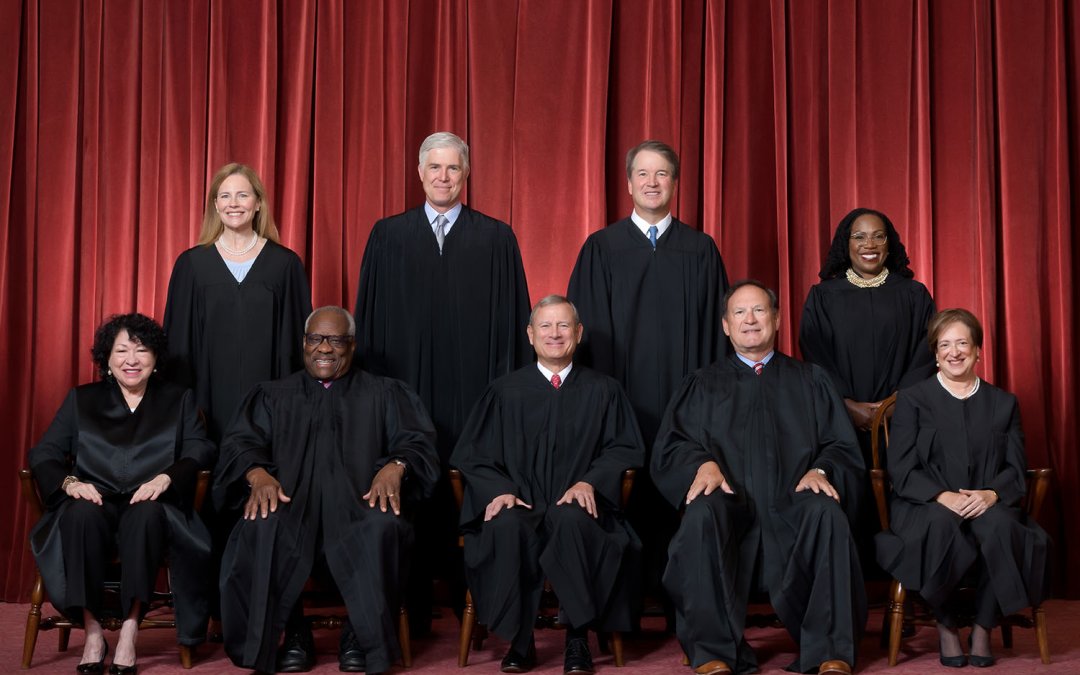WASHINGTON — The Supreme Court heard oral arguments Tuesday in a case that is being closely followed by corporations and whistleblower rights groups across the country. It will determine whether whistleblowers must prove an employer acted with a “retaliatory intent” in wrongful termination suits.
The case, Murray v. UBS Securities, LLC, centers on Trevor Murray, a strategist who the Wall Street firm UBS hired for its commercial mortgage-backed securities business in 2011 but fired shortly after in 2012. Murray alleges he was terminated because he made several complaints to his supervisor about two leaders at UBS who pressured him to skew his research and thus violate his contractual commitment to produce independent reports that “accurately reflected his own views.”
The standard was an important part of the Sarbanes-Oxley Act of 2002, which aims to protect shareholders from being misled by corporate fraud. In addition, one section of the law includes protections for whistleblowers, described in the legislation as “employees of publicly traded companies who provide evidence of fraud.”
Murray sued UBS two years after he was let go, claiming these UBS leaders coached him to engage in conduct that would have violated this law and fired him because he refused to do so.
The Sarbanes-Oxley Act, which Congress passed after the financial fraud failures of Enron and WorldCom, is expected to play a significant role in the court’s decision.
Before reaching the Supreme Court, the U.S. Court of Appeals for the Second Circuit sent the case back to district court for a new trial, vacating the jury’s verdict that ordered UBS to pay Murray $1.7 million in backpay, non-economic damages and lawyer fees. The case was remanded because, according to the appellate court, the district judge did not inform the jury that a plaintiff must demonstrate an employer’s retaliatory intent to win a Sarbanes-Oxley anti-retaliation claim.
The U.S. Chamber of Commerce filed an especially notable amicus brief in support of UBS. The brief argued that an employee must be required to show retaliatory intent to satisfy the standard in the 2002 law.
Ruling that a whistleblower must prove their employer acted with a “retaliatory intent” would make it much more difficult for ex-employees to win anti-retaliation claims. An opinion granting more leniency to plaintiffs could extend whistleblower rights and limit the scope of corporations’ power over their employees.
The whistleblower’s attorney, Easha Anand, argued that employer’s knowledge of protected activity combined with a contributing factor suffices for employing burden-shifting mechanisms outlined by Congress. She added that there is a presumption of intent that does not need to be explicitly proven in this case.
UBS’s counsel, Eugene Scalia, however, shifted the burden of proof to whistleblowers, suggesting they must establish that their employers acted with retaliatory intent when they let them go.
Whatever the decision, questions are already being raised about potential conflicts of interests among the parties and justices involved. Anand clerked for Justice Sonia Sotomayor, and Scalia is the son of the late Supreme Court Justice Antonin Scalia. Notably, Justice Amy Coney Barrett clerked for Scalia. In addition, Justice Clarence Thomas, Justice Samuel Alito and Chief Justice John Roberts all worked closely with Justice Scalia when he was on the bench.
Scalia’s widow was in attendance at the courtroom to observe her son deliver his oral argument to her late husband’s former colleagues.
The first discussion the court prompted with petitioner’s counsel revolved around differentiating or grouping two main legal concepts: causation and liability in anti-retaliation claims.
Chief Justice John Roberts pressed Anand on her unorthodox grouping of the two.
“Normally in the law, in these types of cases, there is a distinction between liability and causation … Your position merges those two,” Roberts said. “You don’t look for liability and causation separately.”
In response, Anand cited Justice Scalia’s majority opinion in Equal Employment Opportunity Commission v. Abercrombie & Fitch Stores, Inc., which stated that a plaintiff must only prove that their protected trait or activity was a motivating factor in a termination or refusal of employment to satisfy the qualifications for a successful anti-retaliation claim. The employer thus would not need “actual knowledge” of the protected trait or action as long as a motivating factor is established, under Scalia’s ruling.
Proving this motivating factor would thus constitute the formation of a sound causation theory and would shift the burden to the employer, rendering them legally liable, according to Anand.
Justice Ketanji Brown Jackson also raised concerns about the idea that an anti-retaliation claim’s success should hinge on the burden of proving retaliatory intent.
“If we eliminate retaliatory animus, there is still a question about discriminatory intent,” Justice Jackson said.
In his argument, Scalia cited the court’s decision in Babb v. Wilkie, asserting that there is precedent for discriminatory intent existing without causation. In that case, Alito wrote the majority opinion, which stated that the plaintiffs were not entitled to compensatory damages without proving that discrimination was a “but-for cause” of the employment decision.
Scalia also emphasized the importance of jury instruction in the district court trial for the case. He said if the jury had been instructed to find that the plaintiff’s supervisor acted with retaliatory intent, their verdict would have likely been different.
Justice Neil M. Gorsuch began to push back against this suggestion, pressing Scalia repeatedly about the standard for establishing retaliation.
“(Let’s say) I intend to treat you differently because of your whistleblowing activity, period,” Gorsuch said. “The word ‘retaliate’ doesn’t appear in that sentence. What’s wrong with that instruction?”
In his closing statement, Scalia asserted if the justices fail to address the evidentiary burden of establishing retaliatory intent they would be “leaving an enormous amount unsettled in whistleblower law.”
The court does not set predetermined dates to issue its decisions, so the ruling could be issued anytime between now and the end of June next year, when the court’s term ends. Supreme Court decisions are not usually released sooner than two to three months after oral arguments are heard.


